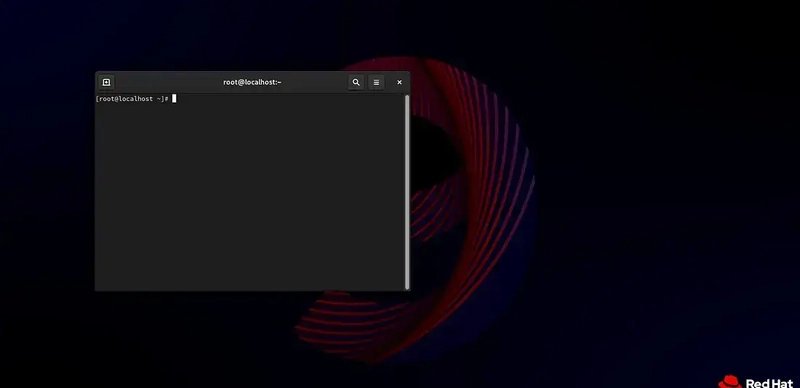📚 Table of Contents
- Intro: RHEL 9, Cloud Services, and You
- First Off, What Even Is "The Cloud"?
- Enter: RHEL 9 (aka the Brain of Your Cloud Machine)
- Real-World Drama: How RHEL 9 Works in the Cloud
- RHEL 9: Security Like a Digital Bodyguard
- Automation Nation: RHEL’s Cloud Superpowers
- Hands On Time: Try RHEL 9 in the Cloud Yourself!
- Final Thoughts: Why You Should Care
Intro: RHEL 9, Cloud Services, and You
So, you’ve heard of Linux. Maybe you think it’s for hoodie-wearing hackers or bearded sysadmins living in dark basements. Not quite.
Red Hat Enterprise Linux 9 (RHEL 9) is like the clean-cut, enterprise-ready big sibling of all those cool Linux cousins. It's the VIP guest in the world of cloud computing. But what happens when this well-groomed Linux OS meets the Cloud?
Spoiler alert: they get along like peanut butter and jelly.
Let’s dive into how RHEL 9 struts its stuff in the cloud—and we’ll throw in some real-life examples to make it all click.
First Off, What Even Is "The Cloud"?
No, it’s not some fluffy thing in the sky that stores cat photos (well... maybe a little).
The cloud = Someone else’s computer, rented by the hour, month, or minute. Big tech companies like AWS (Amazon), Azure (Microsoft), and GCP (Google) own giant data centers so you don’t have to turn your bedroom into a server room.
Enter: RHEL 9 (aka the Brain of Your Cloud Machine)
RHEL 9 is the operating system that runs inside your cloud computers (aka virtual machines or VMs). It's like the manager that makes sure all your apps, files, and services don’t go full chaos mode.
RHEL 9 is:
Super secure (thanks SELinux!)
Container-friendly (Docker? OpenShift? It’s chill.)
Cloud-optimized (It’s got its cloud shoes on.)
Ready to scale (Go from one to 100 servers like a boss.)
Real-World Drama: How RHEL 9 Works in the Cloud
Let’s break it down with a few “based-on-a-true-story” type scenes:
Scene 1: The Retail Company That Wanted to Sell Socks Online
Characters:
- A company selling fancy socks
- AWS cloud
- A shiny RHEL 9 instance
Plot:
They fire up a RHEL 9 EC2 instance on AWS, install Apache, and boom—sock website is live. Firewalls are locked down with firewalld, security’s tight with SELinux, and updates roll in smoother than their cash flow.
Moral:
RHEL 9 on AWS = fast, secure, and scalable online shop. No holes in this sock operation.
Scene 2: The Bank With Trust Issues
Characters:
- A big serious bank
- Some on-prem servers
- Some Azure VMs
- Paranoia (because: money)
Plot:
The bank says, “We don’t trust just the cloud. We want BOTH on-prem and cloud.” Enter: RHEL 9 everywhere. Same OS on-prem, same OS in Azure.
They manage it all with Ansible (for automation) and Red Hat Insights (for creepy-smart monitoring). One script to rule them all.
Moral:
RHEL 9 keeps it consistent and compliant—like a digital accountant that never takes sick days.
Scene 3: The Healthcare Startup With Container Fever
Characters:
- A health tech startup
- A bunch of microservices (buzzword alert!)
- OpenShift on top of RHEL 9
Plot:
They deploy their app in containers. Each one is built on RHEL 9’s Universal Base Image (UBI)—think of it as the foundation for secure, stable containers.
Everything runs smoothly, even when traffic spikes or Karen from DevOps decides to "test in prod."
Moral:
RHEL 9 and containers = match made in DevOps heaven.
RHEL 9: Security Like a Digital Bodyguard
Security’s a big deal, and RHEL 9 is no slouch. It comes with:
- SELinux: Locks down apps like Fort Knox.
- System-wide crypto policies: No weak ciphers allowed.
- Container image scanning: Finds bugs before your customers do.
- FIPS compliance: For when you need to be very government-approved.
So, yes, RHEL 9 wears a suit and earpiece. It’s that serious about security.
Automation Nation: RHEL’s Cloud Superpowers
With RHEL 9, you don’t have to configure 100 servers by hand. That’s a one-way ticket to Carpal Tunnel Town.
Instead, you get:
- Ansible – Write playbooks to configure things while sipping coffee.
- Red Hat Satellite – Mass-manage your Linux fleet like a starship commander.
- Red Hat Insights – Predict issues before they explode (it’s basically Linux with Spidey-sense).
Hands On Time: Try RHEL 9 in the Cloud Yourself!
Feeling brave? Here’s how to dip your toes in the RHEL-cloud love fest:
- Sign up for a free AWS account.
- Launch a RHEL 9 EC2 instance from the AWS Marketplace.
- SSH into it and try these:
sudo dnf update # Updates your system (important!)
sudo systemctl status sshd # Checks if your SSH service is alive
sudo firewall-cmd --list-all # Shows your firewall rules
You’re now officially Linuxing in the cloud.
Final Thoughts: Why You Should Care
RHEL 9 isn’t just a fancy Linux distro—it’s a cloud-ready operating system that:
- Plays nice with AWS, Azure, and GCP
- Handles web apps, banks, startups, and giant Kubernetes clusters
- Keeps things locked down, automated, and stable
If you're looking to build a career in cloud computing, learning RHEL 9 is like unlocking cheat codes. It’s respected, reliable, and (despite the enterprise vibe) kind of fun when you get into it.






Top comments (0)